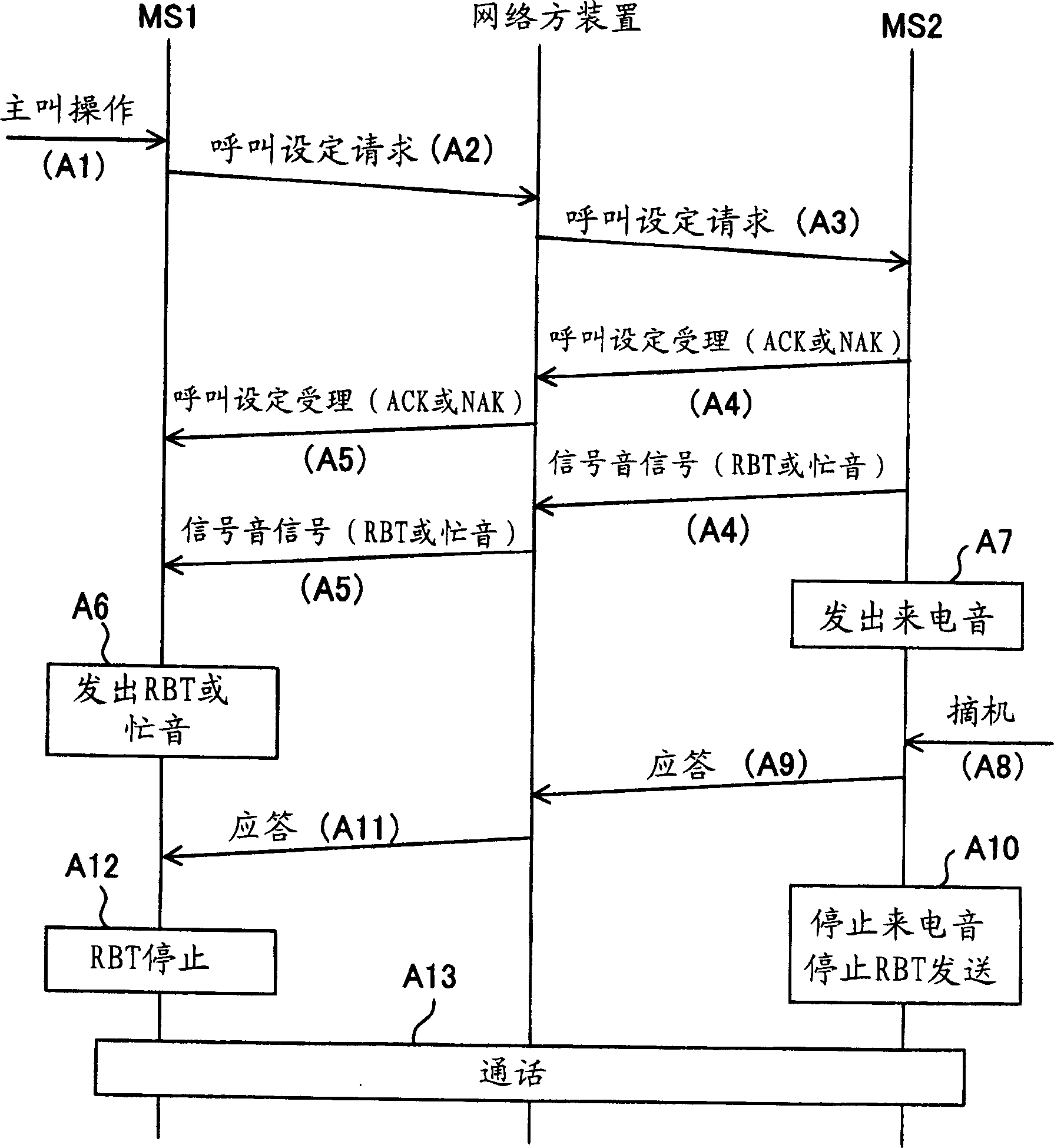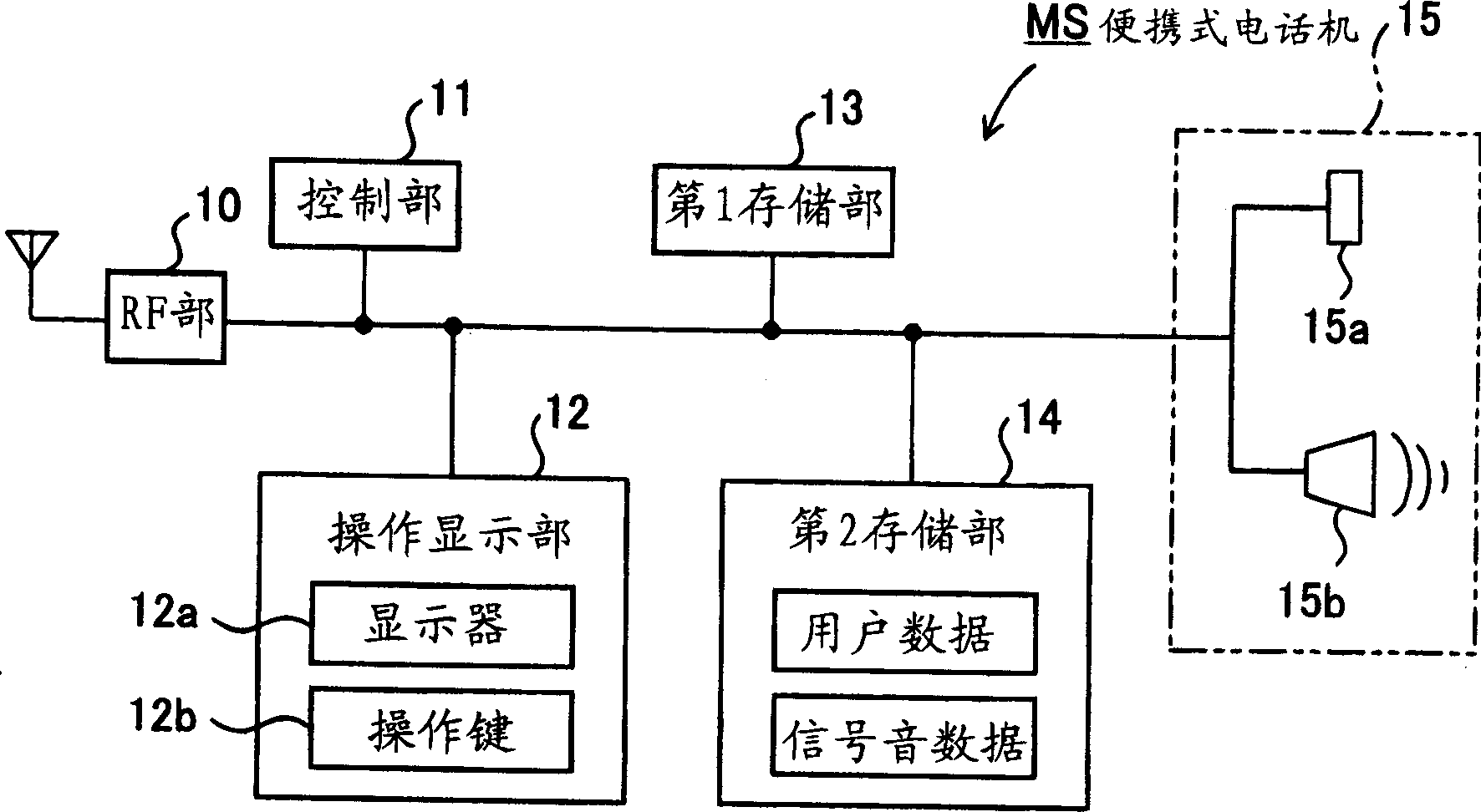Wireless telephone and wireless telephone system
A wireless telephone and telephone technology, applied in telephone communication, radio/inductive link selection arrangement, electrical components, etc., can solve the problem that the user cannot inform the called party of the working status of the telephone
- Summary
- Abstract
- Description
- Claims
- Application Information
AI Technical Summary
Problems solved by technology
Method used
Image
Examples
Embodiment approach 1
[0033] figure 1 It is a conceptual diagram showing the overall configuration of a mobile phone system to which the wireless phone according to Embodiment 1 of the present invention is applied. This mobile phone system conforms to 3G (3Generation) standards such as W-CDMA, UMTS (Universal Mobile Telecommunications System) and cdma 2000, 2.5G (2.5Generation) standards such as IS-95, or PDC (Personal Digital Cellular) and GSM (Global System for Mobile communications) and other 2G (2Generation) standards, which include a plurality of mobile phones MS1 and MS2 (hereinafter collectively referred to as "mobile phones MS") and a network-side device 1 .
[0034] figure 2 It is a sequence diagram for explaining the call setting process of the above-mentioned mobile phone system. For example, consider a situation where one mobile phone (hereinafter referred to as "caller's mobile phone" as needed) MS1 is hung up to another party's mobile phone (hereinafter referred to as "called party...
Embodiment approach 2
[0065] Figure 7 It is a sequence diagram for explaining the processing at the time of call setting of the mobile phone system according to Embodiment 2 of the present invention.
[0066] In Embodiment 1 above, the user of the called party mobile phone MS2 is issued in the calling party mobile phone MS1 by sending the signal tone data registered in the called party mobile phone MS2 to the calling party mobile phone MS1. Original RBT or busy tone. In contrast, in Embodiment 2, signal tone data is pre-registered in mobile phone MS1 of not the called party but the calling party. Data emits RBT or busy tone. Accordingly, the user of the mobile phone MS1 as the calling party can hear the original RBT or busy tone that suits his preference through his own mobile phone MS. Therefore, it is possible to improve the service to the user of the calling mobile phone MS1.
[0067] In further detail, after the calling party mobile phone MS1 performs the calling operation (B1), it sends a...
Embodiment approach 3
[0074] Figure 8 It is a block diagram showing the internal configuration of the mobile phone MS according to the third embodiment. exist Figure 8 In, about with image 3 The same functional parts use the same reference symbols.
[0075] In Embodiment 1 or 2 above, signal tone data dedicated to RBT and busy tone are registered in the mobile phone MS. On the other hand, in the third embodiment, the data of the ringing tone registered in the mobile phone MS as the data for emitting the ringing tone is used as the data of the RBT or the busy tone. Accordingly, there is an advantage that no dedicated memory area for signal tone data is required on the mobile phone MS.
[0076] In more detail, the second storage unit 14 of the mobile phone MS according to Embodiment 3 stores ringtone data in addition to user data. The ringtone data is the data of the ringtone that is emitted when there is an incoming call, and is stored in advance or downloaded from the Internet, for example....
PUM
 Login to View More
Login to View More Abstract
Description
Claims
Application Information
 Login to View More
Login to View More - R&D
- Intellectual Property
- Life Sciences
- Materials
- Tech Scout
- Unparalleled Data Quality
- Higher Quality Content
- 60% Fewer Hallucinations
Browse by: Latest US Patents, China's latest patents, Technical Efficacy Thesaurus, Application Domain, Technology Topic, Popular Technical Reports.
© 2025 PatSnap. All rights reserved.Legal|Privacy policy|Modern Slavery Act Transparency Statement|Sitemap|About US| Contact US: help@patsnap.com



